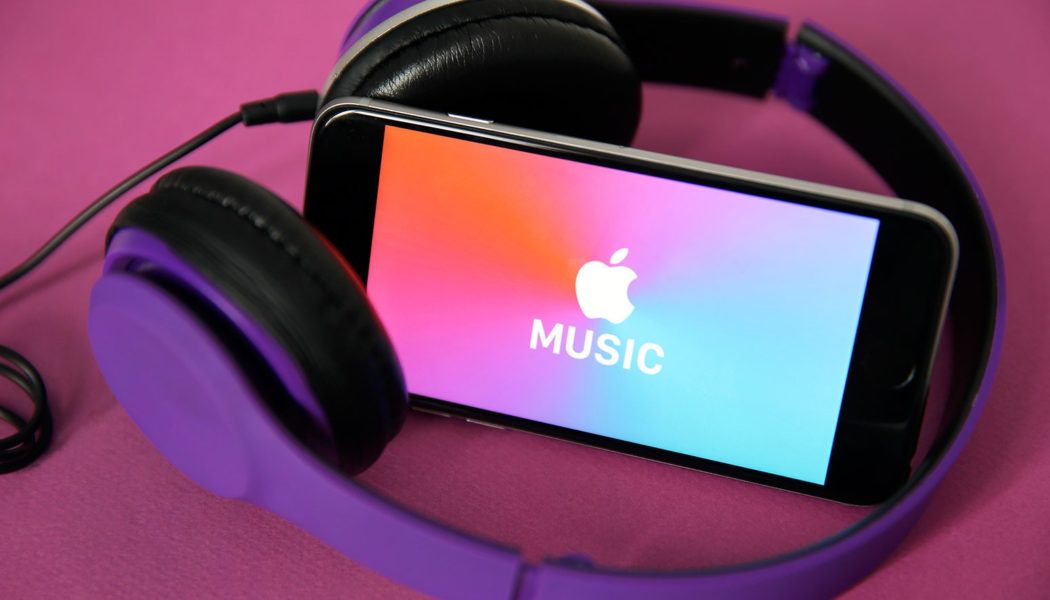
“Apple Music is making its biggest advancement ever in sound quality,” Oliver Schusser, Apple’s vice president of Apple Music and Beats said in a statement. “Listening to a song in Dolby Atmos is like magic. The music comes from all around you and sounds incredible. Now we are bringing this truly innovative and immersive experience to our listeners with music from their favorite artists like J Balvin, Gustavo Dudamel, Ariana Grande, Maroon 5, Kacey Musgraves, The Weeknd, and so many more. Subscribers will also be able to listen to their music in the highest audio quality with Lossless Audio. Apple Music as we know it is about to change forever.”
Apple Music is also launching spatial audio (with support from Dolby Atmos) for music, which will allow artists to record music in 3D to give the listener a surround sound experience. Spatial audio has been available on iOS devices for TV and films since last year. The company says “thousands” of tracks will be available in spatial audio at launch, with more being added on a regular basis. Maroon 5’s next album JORDI, which arrives on June 11th has been recorded in spatial audio, the group tells Billboard. “As a band, we’ve always been interested in new technologies and it’s exciting to imagine what the future will hold given that the advent of Spatial Audio mixing seems akin to the leap music made when it shifted from Mono to Stereo,” Jesse Carmichael tells Billboard.
“It’s an entirely new way of experiencing our music,” adds Adam Levine.
Apple says its Hi-Fi offering will be available next month, and 75 million songs will be available lossless CD-quality audio (from 16-bit / 44.1kHz to 24-bit / 48Hz) and in Hi-Res Lossless (24-bit / up to 192 kHz). Unlike competing services that use FLAC files for their lossless playback, Apple will use its own proprietary codec, known as Apple Lossless Audio Codec (ALAC) to stream its high-fidelity music.
The moves by Amazon and Apple Music to bring the price of high-fidelity music down to $9.99 a month throws a giant wrench into their streaming competitors’ plans to raise average revenue per user (ARPU) through higher-priced subscriptions for Hi-Fi tiers. This was particularly important for Spotify, which has barely changed its prices since entering the U.S. market in 2011 and has faced declining ARPU since 2017 amid global expansion and the growth of family plans and other group discounts. But now it will be hard for its competitors to charge more for the same service and reach scale.
Spotify announced its high-fidelity service in February but has not yet disclosed pricing. Spotify said high-fidelity audio was one of the most requested features from its user base, and across the music industry the expectation was that Spotify would charge more than the $9.99 a month it does for its Premium service, a move that could help it solidify its profitability long-term. But a price increase at this point will be challenging for a consumer base that can effectively get the same product for no additional cost, from both Amazon and Apple, likely making Spotify’s road to sustained profitability more challenging.
For Apple, the move to incorporate high-fidelity streaming while avoiding a price increase should help it garner some new subscribers who want improved audio quality at no additional cost. Tidal, now owned by Square, and its $19.99 a month Hi-Fi service looks further out of touch than it did last week, and companies like Deezer and French streaming service Qobuz — who lowered their high-fidelity streaming prices to $14.99 a month from $19.99 shortly after Amazon Music HD became available in September 2019 — will have to consider lowering their prices once again to keep pace.









